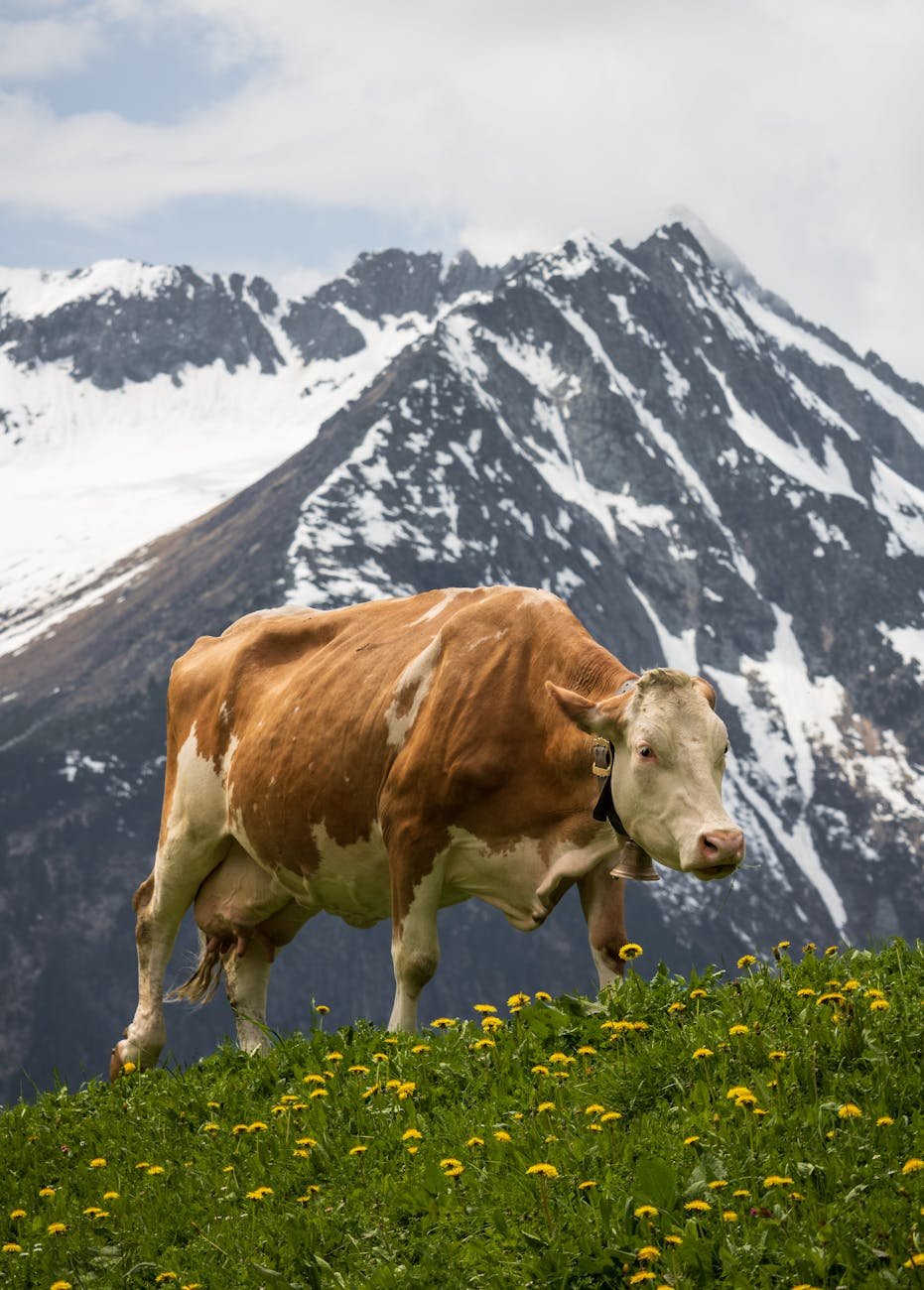The Evolution of Agricultural Universities
Agricultural universities have undergone significant transformations since their inception. This section delves into the key milestones that have shaped these institutions and their impact on the field of agriculture.
Land-Grant College Establishment
The establishment of land-grant colleges marked a pivotal moment in the evolution of agricultural education. The first Morrill Act, passed in 1862, provided federal lands to states to be sold to support colleges focusing on agriculture and mechanical arts. These institutions aimed to make higher education accessible to a broader segment of the population, including those in rural areas.
| Year | Act | Purpose |
|---|---|---|
| 1862 | Morrill Act | Establish land-grant colleges for agriculture and mechanical arts |
Mandates for Agricultural Experimentation
The Hatch Act of 1887 was another crucial development. This act mandated the creation of agricultural experiment stations in connection with land-grant colleges. These stations were tasked with conducting scientific research to improve agricultural practices, thereby bridging the gap between academic research and practical farming.
| Year | Act | Purpose |
|---|---|---|
| 1887 | Hatch Act | Establish agricultural experiment stations for scientific research |
Inclusive Endowment for Education
The Second Morrill Act, passed in 1890, aimed to further support land-grant colleges by providing additional endowments. Notably, this act included provisions to fund institutions for black students, leading to the creation of historically black land-grant colleges (APLU). This inclusive approach ensured that educational opportunities were extended to a more diverse population.
| Year | Act | Purpose |
|---|---|---|
| 1890 | Second Morrill Act | Provide additional endowments, including for historically black colleges |
Cooperative Extension Initiatives
The Smith-Lever Act of 1914 played a significant role in extending the reach of agricultural education beyond campus boundaries. This act provided federal support for land-grant institutions to offer Cooperative Extension services in agriculture and home economics. These initiatives aimed to educate farmers and their families on the latest agricultural techniques and home management practices through community-based outreach programs.
| Year | Act | Purpose |
|---|---|---|
| 1914 | Smith-Lever Act | Provide federal support for Cooperative Extension services in agriculture and home economics |
Agricultural universities have continually evolved to meet the changing needs of society. From land-grant colleges to inclusive educational endowments and Cooperative Extension initiatives, these institutions have played a vital role in advancing agricultural knowledge and practices. For more information on related educational programs, check out our articles on veterinary college and vet science colleges.
Agricultural Universities in India
India’s agricultural universities play a significant role in revolutionizing veterinary education. These institutions provide specialized training, research opportunities, and extension services to support the nation’s agricultural sector.
State Agricultural Universities (SAUs)
State Agricultural Universities (SAUs) are pivotal in India’s agricultural education landscape. The first SAU, G. B. Pant University of Agriculture and Technology, was established in Pantnagar on November 17, 1960, and was inaugurated by India’s first Prime Minister, Jawaharlal Nehru. Today, there are 54 SAUs across the country, each characterized by their triple mandate of teaching, research, and agricultural extension.
| University Name | Location | Established |
|---|---|---|
| G. B. Pant University of Agriculture and Technology | Pantnagar | 1960 |
| Punjab Agricultural University | Ludhiana | 1962 |
| Tamil Nadu Agricultural University | Coimbatore | 1971 |
| University of Agricultural Sciences | Bangalore | 1964 |
SAUs were established with technical cooperation from United States land-grant universities, significantly influencing their academic programs. These universities offer a wide range of courses, including veterinary science and vet medicine, catering to the needs of students and professionals in the agricultural sector.
Deemed Universities for Agriculture
Deemed universities for agriculture in India are not established by independent legislation but are declared to function as universities by the Government of India under Section 3 of the University Grants Commission Act 1956. There are currently seven agricultural universities under the deemed university category, with a proposal to establish six more in the 12th Five-Year Plan.
These universities offer specialized programs in agriculture, horticulture, forestry, and veterinary courses. They focus on advanced research and innovation, providing students with opportunities for further education and specializations.
Central Agricultural University (CAU)
The Central Agricultural University (CAU) at Imphal, Manipur, was incorporated by an act of Parliament (No.4 of 1992) and caters to multiple states in Northeast India (Wikipedia). It is the only Central Agricultural University in the country, with proposals and demands for establishing more CAUs to address the educational needs of other regions.
CAU offers a comprehensive range of academic programs, including animal studies and veterinary medicine. The university is dedicated to improving agricultural practices and promoting sustainable development in the Northeast region through its research and extension services.
Expansion of Agricultural Universities
The expansion of agricultural universities in India has been a significant factor in advancing the country’s agricultural sector. With the establishment of more SAUs, deemed universities, and potential new CAUs, the scope for education, research, and extension services has broadened.
| Type of University | Number of Institutions |
|---|---|
| State Agricultural Universities (SAUs) | 54 |
| Deemed Agricultural Universities | 7 (with proposals for 6 more) |
| Central Agricultural University (CAU) | 1 |
These institutions offer a variety of programs and specializations, including bachelor of veterinary and veterinary doctor courses, providing students with the skills and knowledge necessary to excel in their careers. The continuous growth and development of agricultural universities ensure that India remains at the forefront of agricultural innovation and education.
Careers in Agriculture
Exploring careers in agriculture can lead to a variety of fulfilling opportunities for graduates. This section provides insights into employment possibilities, essential skills, and further education options for those in the agricultural field.
Employment Opportunities
Agriculture graduates have a broad spectrum of employment opportunities available to them in both public and private sectors. They can work in farm management, service and supply industries, sales, research, and advisory or consultancy roles (Prospects). Here’s a breakdown of employment areas:
| Employment Area | Percentage of Graduates |
|---|---|
| Agricultural and Related Trades | 11% |
| Elementary Agricultural Occupations | 9% |
| Managers and Proprietors in Agriculture-related Services | 6% |
Many graduates find positions in the UK and abroad, making the field versatile and expansive. For more details on specific roles, check out our page on agricultural roles and responsibilities.
Skills Development for Agriculture Graduates
Agriculture programs equip students with a mix of technical skills and knowledge critical for their careers. Graduates develop expertise in:
- Land use and farming practices
- Food production
- Crop and livestock science
- Farm machinery usage
- Sustainability and environmental management
Additionally, agriculture education provides an understanding of the scientific, technical, ethical, and business principles underlying the industry. Practical work experience is also vital. Opportunities include:
- Placement years
- Holiday work
- Voluntary projects in agricultural or environmental fields
For more information on skill development, visit our section on skills development for agriculture graduates.
Further Education and Specializations
Further education can significantly enhance career prospects for agriculture graduates. Pursuing a Master’s or other postgraduate qualifications in areas such as crop science, animal technology, or agricultural technology is common. A PhD is often required for research or academic positions.
| Further Education | Purpose |
|---|---|
| Master’s Degree | Specialization in specific areas |
| PhD | Research and lecturing |
| Postgraduate Qualification | Career changes (journalism, marketing, consulting) |
Exploring further education options can lead to diverse career paths. For detailed pathways, check out our section on further education and specializations.
By understanding the diverse career opportunities, essential skills, and further education options, agriculture graduates can navigate their professional journeys effectively. For more insights, visit our pages on veterinary science and veterinary doctor course.
Technological Advancements in Agriculture
Agricultural universities have played a pivotal role in advancing technology within the agricultural sector. This section delves into the impact of radio and television, farm machinery innovations, and hybrid seed development. Each of these technological advancements has significantly contributed to modern agricultural practices.
Impact of Radio and Television
The advent of radio and television revolutionized the way information was disseminated to farm families. These mediums provided an accessible platform for sharing new ideas, technologies, and agricultural practices. For instance, farmers learned about food-freezing processes, hybrid seed production, and the introduction of soybeans as a major crop. Additionally, important topics such as soil conservation programs, cattle and hog breeding improvements, and advancements in the livestock industry were covered extensively.
| Technology | Information Provided |
|---|---|
| Radio | Soil conservation, livestock breeding, hybrid seeds |
| Television | Food-freezing processes, major crop additions, agricultural techniques |
Farm Machinery Innovations
Advancements in farm machinery during the latter part of the 19th century had a profound impact on agricultural productivity. The development of more efficient machinery allowed farmers to cover larger areas of land more quickly, significantly reducing manual labor (Iowa PBS). Innovations included the addition of seats to farm machinery, providing greater comfort and efficiency for farmers.
| Innovation | Benefit |
|---|---|
| Advanced Machinery | Increased land coverage, reduced labor |
| Machinery with Seats | Enhanced comfort, improved efficiency |
Hybrid Seed Development
The introduction of hybrid seeds marked a significant milestone in agricultural technology. In the 1930s, the development of hybrid corn seed revolutionized crop production. Nearly all corn planted in the United States today is a hybrid variety, demonstrating the widespread adoption and success of this innovation (Iowa PBS). Hybrid seeds have contributed to higher yields, improved disease resistance, and overall better crop performance.
| Seed Type | Benefits |
|---|---|
| Hybrid Corn Seed | Higher yields, disease resistance, better performance |
For veterinary doctors and students, understanding these technological advancements is essential. They provide context for the broader agricultural environment in which they will work. For more information on related topics, explore our articles on veterinary medicine and vet science colleges.
Agricultural Roles and Responsibilities
Agricultural universities play a vital role in preparing students for diverse careers in agriculture. Here, we explore the various roles and responsibilities in the field, focusing on agricultural engineers, economists, farm managers, soil and plant scientists, and conservation planners.
Agricultural Engineers
Agricultural engineers combine innovation with practical skills to design new equipment and machinery using computer-aided technology. They advise farmers on land use and supervise agricultural construction projects. Key skills include:
- Strong grasp of mathematics and science
- Problem-solving abilities
- Creativity
- Effective communication
| Role | Key Responsibilities | Essential Skills |
|---|---|---|
| Agricultural Engineer | Design machinery, advise on land use, supervise construction | Math, science, problem-solving, creativity, communication |
For more details, check out Top Universities.
Agricultural Economists
Agricultural economists apply economic principles to understand decisions related to agriculture. They analyze economic data and identify trends in economic activity. They work in various settings, including offices and fields, often collaborating with other economists, farmers, and statisticians. Essential qualifications include:
- Economics degree
- Strong mathematical skills
| Role | Key Responsibilities | Essential Skills |
|---|---|---|
| Agricultural Economist | Analyze economic data, identify trends, collaborate with stakeholders | Economics degree, mathematical skills |
Learn more about agricultural economists on Top Universities.
Farm Managers
Farm managers oversee all aspects of farm operations, from making business decisions to maintaining equipment and marketing products. They must ensure compliance with regulations and apply health and safety standards. Key qualifications and skills involve:
- Hands-on farming experience
- Technical knowledge
- Degrees in agricultural engineering or agriculture
| Role | Key Responsibilities | Essential Skills |
|---|---|---|
| Farm Manager | Oversee operations, make business decisions, maintain equipment | Farming experience, technical knowledge |
Find out more about the role of farm managers at Top Universities.
Soil and Plant Scientists
Soil and plant scientists focus on analyzing soil composition, researching crop growth methods, and advising food growers on maximizing efficiency. They work in offices, laboratories, and on farms. These scientists specialize in food processing methods and provide critical insights to farmers.
| Role | Key Responsibilities | Essential Skills |
|---|---|---|
| Soil and Plant Scientist | Analyze soil, research crop methods, advise growers | Analytical skills, research proficiency |
For more details on soil and plant scientists, visit Top Universities.
Conservation Planners
Conservation planners assess the environmental value of land, prepare reports, and analyze environmental issues. They act as intermediaries between developers, environmental groups, and the government. Essential skills include:
- Project management
- Self-motivation
- Organizational abilities
- Environmental science degree
| Role | Key Responsibilities | Essential Skills |
|---|---|---|
| Conservation Planner | Assess land value, prepare reports, analyze issues | Project management, self-motivation, organization |
Learn about conservation planners at Top Universities.
These roles highlight the diverse career opportunities available to graduates of agricultural universities. To explore more about veterinary education and related careers, visit our articles on veterinary science and veterinary medicine.
Historical Perspective on Agricultural Extension
Development of Agricultural Extension Services
Agricultural extension work has a rich history that spans nearly four thousand years. Its modern forms largely developed over the past two centuries, focusing on improving farmers’ abilities to adopt new practices and adjust to changing conditions (FAO). Initially, agricultural advice was informal, with early examples dating back to Mesopotamia around 1800 B.C., where clay tablets provided guidance on watering crops and pest control. Ancient civilizations such as Egypt, Greece, and Rome also engaged in similar efforts to disseminate agricultural knowledge.
The formalization of agricultural extension began in the mid-19th century. In the 1820s, itinerant agricultural lecturers emerged in parts of New England and New York. By the 1840s, similar developments occurred in Germany and France, marking the early stages of modern agricultural extension services (FAO).
Origin and Evolution of Extension Services
The term “extension” in the context of agricultural extension work originated from educational developments in England during the latter half of the nineteenth century. The concept of “university extension” began around 1850, quickly evolving into a well-established movement by the end of the century. This movement significantly influenced similar activities in the United States and other countries.
One of the earliest and most notable examples of modern agricultural extension services was established in response to the potato blight crisis in Europe in 1845. In Ireland, the British viceroy appointed itinerant lecturers to educate small farmers on improving cultivation practices. This initiative marked a significant milestone in the history of agricultural extension services (FAO).
Modernization of Extension Services
Over the years, agricultural extension services have continued to evolve, incorporating new technologies and methodologies to better serve the farming community. Today, extension services encompass a diverse range of socially sanctioned activities aimed at enhancing farm productivity and sustainability. Modern extension services utilize advanced communication tools, including radio, television, and the internet, to disseminate agricultural information widely.
The modernization of extension services also involves collaborations with agricultural universities and research institutions. These partnerships help in the development of innovative farming techniques and the dissemination of cutting-edge research findings to farmers. For instance, veterinary colleges like veterinary college play a crucial role in educating and training future agricultural professionals, ensuring that they are equipped with the latest knowledge and skills to support the farming community.
In summary, the development, origin, and modernization of agricultural extension services highlight their critical role in advancing agricultural practices and supporting farmers worldwide. By leveraging the expertise and resources of institutions like vet science colleges and veterinary course programs, agricultural extension services continue to drive progress and innovation in the agricultural sector.
Academic Programs at Humboldt-Universität zu Berlin
Bachelor’s Program in Agricultural Sciences
Humboldt-Universität zu Berlin offers a comprehensive Mono-bachelor program in Agricultural Sciences, leading to a Bachelor of Science (B. Sc.) degree. This program spans six semesters, totaling 180 credit points (CP). The curriculum includes mandatory modules, mandatory elective modules, and general elective modules, providing students with practice-oriented expertise in crop sciences, animal sciences, agricultural economics, and social sciences. Upon completion, graduates will have the foundation for a second professional qualification (Humboldt-Universität zu Berlin).
| Semester | Credit Points (CP) |
|---|---|
| 1 – 6 | 180 |
Focus on Natural Processes
The Agricultural Sciences program at Humboldt-Universität zu Berlin emphasizes natural processes related to agriculture, including farming, nature management, and product creation. The course aims to equip students with the skills to address global challenges such as extreme weather conditions affecting agriculture. The institute has a long history of addressing questions related to agriculture and nature.
Collaborative Projects with Other Universities
Through the ‘AgrosNet’ project, Humboldt-Universität zu Berlin collaborates with agricultural faculties in Rostock and Halle. This collaboration allows students to access teaching modules from all three universities, facilitated by a ‘virtual campus’ and modern communication methods such as distance learning, video conferences, and lectures on DVD. This cooperative approach enhances the educational experience by combining resources for the benefit of students.
Pathways to Master’s Degrees
The bachelor’s degree in Agricultural Sciences at Humboldt-Universität zu Berlin serves as a foundation for subsequent master’s courses, opening up further fields of application such as science, development aid, and providing the basis for a doctoral degree (Humboldt-Universität zu Berlin). The faculty offers a variety of internationally-oriented master’s programs, including:
- Agricultural Economics
- Fish Biology and Aquaculture
- Horticultural Science
- Integrated Natural Resource Management
- Process and Quality Management
These master’s courses provide students with diverse opportunities for specialization and career development. For more information on related programs, visit veterinary science and animal studies.
Diverse Master’s Programs at Humboldt-Universität zu Berlin
Humboldt-Universität zu Berlin offers a variety of master’s programs tailored to students interested in advancing their careers in agriculture. Each program provides specialized knowledge and practical skills suited for different roles in the agricultural sector.
Specializations in Agricultural Economics
A master’s in Agricultural Economics focuses on applying economic principles to agricultural contexts. Students learn to analyze economic data, understand economic trends, and make informed decisions related to agriculture. This program is ideal for those aiming to work as agricultural economists, who often collaborate with other economists, farmers, and statisticians.
| Program | Core Focus |
|---|---|
| Agricultural Economics | Economic analysis, data interpretation, trend determination |
For more details on how this specialization prepares students for careers in agriculture, visit our page on vet science colleges.
Fish Biology and Aquaculture
The Fish Biology and Aquaculture master’s program focuses on the biology of fish species and the science of aquaculture. Students gain insights into fish physiology, breeding, and sustainable aquaculture practices. This program is suitable for those interested in managing fish farms or conducting research in aquatic environments.
| Program | Core Focus |
|---|---|
| Fish Biology and Aquaculture | Fish physiology, breeding, sustainable practices |
To explore further educational opportunities in this field, check out our veterinary course page.
Horticultural Science
Horticultural Science is a specialized master’s program that delves into plant cultivation, breeding, and the science behind growing fruits, vegetables, and ornamental plants. This program is designed for students who aspire to careers as soil and plant scientists, who analyze soil composition and advise food growers on maximizing crop efficiency (Top Universities).
| Program | Core Focus |
|---|---|
| Horticultural Science | Plant cultivation, breeding, crop efficiency |
Visit our veterinary science page for more information on related programs.
Natural Resource Management
The Integrated Natural Resource Management master’s program addresses the sustainable management of natural resources. Students learn about conservation planning, environmental impact assessment, and sustainable development practices. This program is perfect for those aiming to become conservation planners, who prepare reports, analyze environmental issues, and liaise between various stakeholders (Top Universities).
| Program | Core Focus |
|---|---|
| Natural Resource Management | Conservation planning, environmental assessment, sustainable development |
For additional insights into careers in agriculture, visit our vet medicine page.





